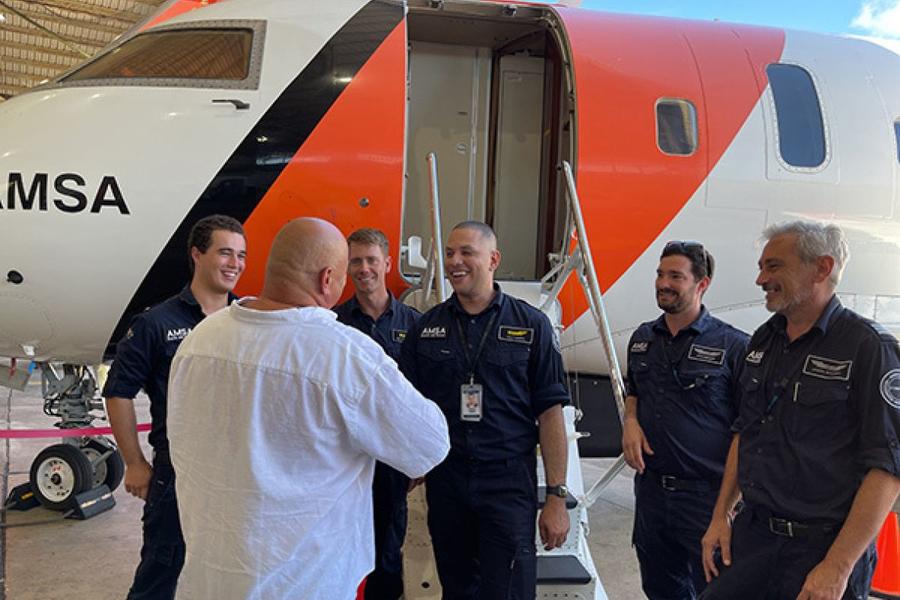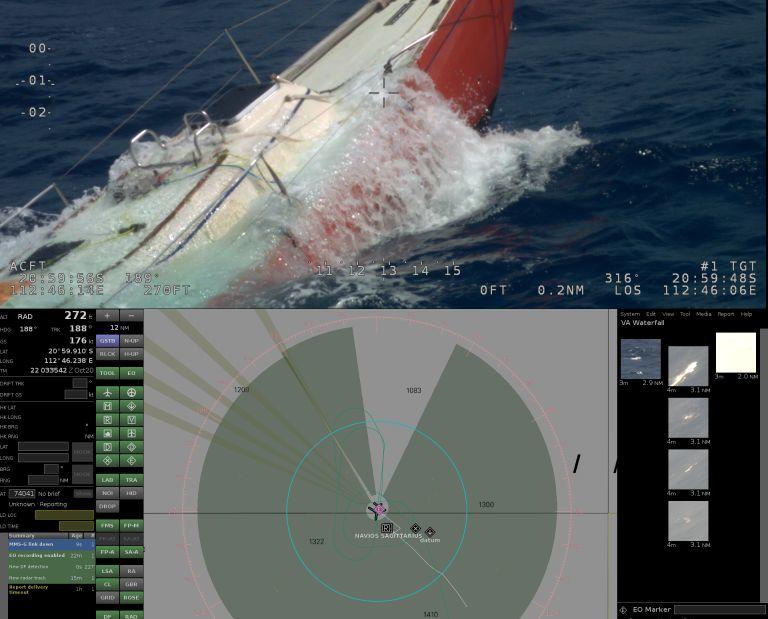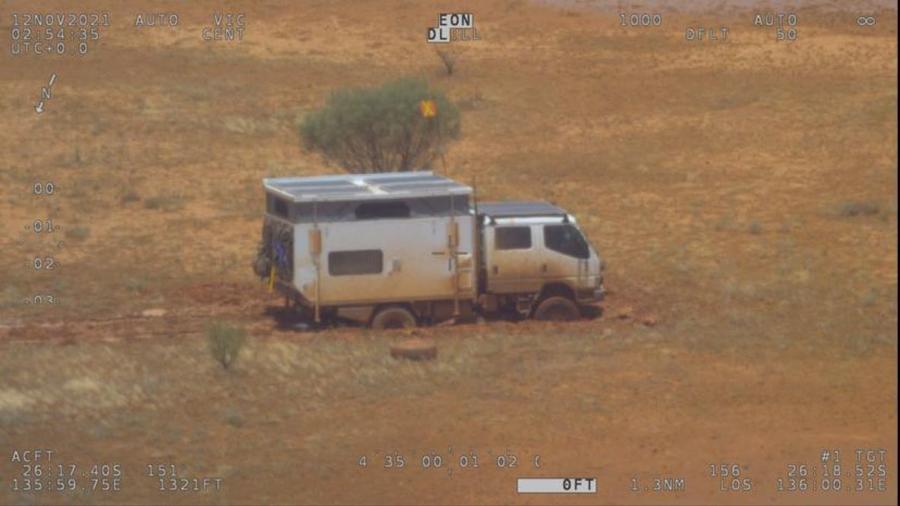
Case Studies
We have a strong track record of achieving successful operational outcomes through the special missions we conduct on behalf of the Australian government for border protection, law enforcement, environmental protection, and emergency response operations.
Saving Lives
Our search and rescue (SAR) operations cover a SAR response area equivalent to one tenth of the Earth’s surface. Since commencing SAR operations, we have responded to more than 900 events and been involved with assisting and saving more than 1,500 lives.
-
Our Cairns-based SAR crew met with a solo sailor they were instrumental in rescuing after he miraculously survived an eight-hour ordeal, wearing only his lifejacket, in rough seas off the Northern Territory coastline.
It is a rare occurrence for our SAR crews to meet with survivors due to our lifesaving work being conducted from the air. Having the opportunity to meet people they have played a role in rescuing is both a great learning experience for our crew and also very humbling.
Under a contract with the Australian government, Leidos provides SAR operations Australia-wide in partnership with the Australian Maritime Safety Authority (AMSA).
The incident
On 4 January 2021, the team was briefed by AMSA to search for Nigel Fox, a solo sailor lost overboard in rough seas approximately 93 km off the coast of the Northern Territory. Our Challenger aircraft and crew were dispatched from Cairns, and the NT Police were briefed to dispatch a marine vessel from Nhulunbuy.
Upon arriving on the scene, the crew detected the survivor’s emergency position indicating radio beacon (EPIRB) signal, and he was sighted in the water. Given the conditions and the size of the target, maintaining visuals was challenging, so the crew utilised their video anomaly detection system (video detection and ranging, or ViDAR) and electro-optics to pinpoint his location.
By the time Fox was located by our aircraft, he had already drifted 23 km away from his yacht. Without his EPIRB attached to his lifejacket, the likelihood of anyone knowing he was missing — or him being found alive — was very slim.
Our crew then successfully dropped a life raft and very high frequency (VHF) radio to Fox, allowing him to safely climb onboard, make contact with our crew, and await rescue by the NT Police marine vessel.
This was the first time a solo raft has been deployed from an aircraft to a person in the water by our SAR crew.
Fox was ultimately rescued by the NT Police marine vessel five hours after he was located by our aircraft. They transported him to Gove District Hospital as he was suffering from exhaustion and dehydration as well as two broken ribs from the night prior.
About the survivor
Nigel Fox was born in Southampton and is now an Australian citizen. He learned to sail as a youngster on the Rivers Itchen and Test in the UK.
Fox had been sailing with his beloved cat, and companion of more than 15 years, Stinky, for three and a half years prior to the fateful incident.
His yacht was retrieved by friends in Nhulunbuy about 30 hours after his rescue. Thankfully, Stinky was found safely onboard.
"To be able to shake their hands and say, 'You were the person who spotted me, you were the person I was talking to on the radio' – it’s really good. And they’re part of a far larger network of people that saved my life," —Nigel Fox, survivor .
"It's an awesome feeling, getting to actually meet him and shake his hand." —Ollie Marin, Aircraft Mission Coordinator. Aircraft mission coordinator Ollie Marin, who was aboard the aircraft that located Nigel, described the difficulty in finding him and dropping the life raft.
"What actually picked him up was three cameras on the nose of the aircraft called ViDAR, which is actually a technology to automatically detect different colour and shape based on the background of the water. Thanks to Nigel's bright lifejacket, the cameras automatically took a picture and gave his position, and then we set up to drop a life raft. Until he was in that raft, it was pretty tense, and it was a big sigh of relief when he was finally in and we knew he was safe," —Ollie Marin, aircraft mission coordinator
Marin and the other AMSA crew were grateful to meet the man they rescued and praised Fox for carrying lifesaving equipment.
-
The SAR teams have been fortunate to meet with survivors on a small number of occasions. This is a particularly valuable experience for casualty culture training, enabling our crew to understand the experiences of a person in distress and providing another perspective to a SAR event.
In December 2020, one of our SAR crews had the opportunity to meet with a sailor they were instrumental in saving from his sinking yacht at sea.
The incident
On 22 October 2020, the team were tasked by AMSA to search for an 11-metre yacht, the Ciella, that had run into trouble off the North Western Cape of WA. The yacht had departed Townsville 27 days earlier attempting a solo circumnavigation of Australia.
The solo sailor, Derek Desaunois, had abandoned his sinking yacht and was in a life raft tethered to it. He had activated the yacht’s emergency position indicating radio beacon (EPIRB), and the sinking yacht and life raft had also been visually sighted by a passing container ship, the Navios Sagittarius.
The SAR team departed Perth Airport en route to Desaunois’ location using information from the visual sighting, the signal from the 121.5 mhz EPIRB, and the aircraft’s video anomaly detection system. The crew subsequently located and made contact with him via Marine CH16 (a VHF radio frequency designated as an international distress frequency that is only used for distress, urgency, and safety priority calls). He advised he was the only person onboard the yacht and was in good health and spirits. Desaunois was well prepared and had a satellite phone with him, allowing the crew to liaise with him throughout the rescue effort. The crew advised Desaunois that a winch-capable helicopter was on its way from Karratha and also spoke with the helicopter crew to provide situation awareness and onsite weather details. The crew then maintained constant visual contact with Desaunois until he was winched to safety by the helicopter.
Meeting the survivor
Derek Desaunois is a seasoned sailor with more than 40 years’ experience sailing the open seas. Following this SAR event, he visited the Perth SAR base to meet with the five crew members involved in his rescue. Comments from the meeting reflect that the experience was invaluable for all parties.
"I think meeting and talking with Derek sends a very powerful message, not only for the operational crew on the day but for our operational base and our search and rescue community. Although not every search and rescue has such a positive outcome, we should celebrate the 'wins.' These face-to-face meetings with survivors help us to improve and learn and ultimately save more lives." —Paul Rowlands, drop master
"We sometimes feel disconnected from the survivor, especially from my position as aircraft mission coordinator, as I only get to sight a survivor through the lens of our electro-optic sensors. We rarely get feedback on what the survivors we have helped feel, or think of our service, so it has been great to get personal thanks from Derek and hear his story." —Chris Hinder, aircraft mission coordinator
"I really want to say thank you to the crew. They were awesome. As soon as I saw the plane overhead, I just sat back and felt safe. I was kept informed the whole time and knew what was going to happen and when. It was a very positive experience." —Derek Desaunois, survivor
-
In May 2021, we participated in a significant, complex rescue about 700 km off the coast of WA, which ultimately saved the lives of 20 Indonesian fishermen aboard a sinking 35 metre fishing vessel.
The multi-agency effort included our SAR crews and jets from across three bases, the Australian Defence Force, state and federal government agencies, and a Japanese fishing vessel working together to achieve a successful outcome.
-
In October 2021, our SAR crews assisted a family trapped in its 4WD campervan by flooded roads in remote far north South Australia. They dropped all of the necessary life-saving items for the young family stuck in its vehicle and went above and beyond, also providing toys, movies, mail from extended family, and a care package created by the crew’s own children. The family was successfully rescued by helicopter in the coming days.


